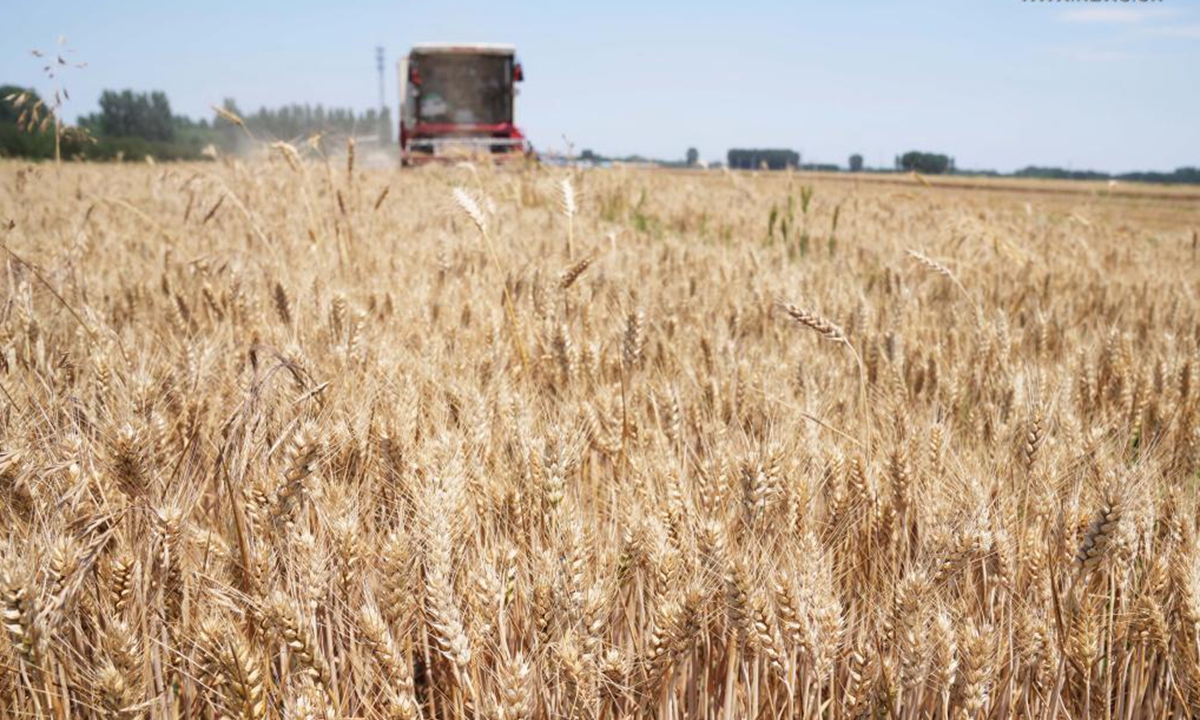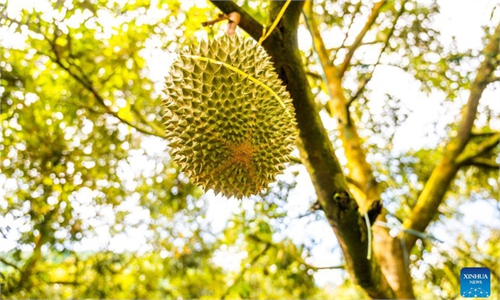
Reapers harvest wheat in the fields of Tancheng County, Linyi City, east China's Shandong Province, June 11, 2021. China reaped another bumper summer harvest in 2021, the country's agriculture minister said Wednesday.(Photo by Zhang Chunlei/Xinhua)
There has been phased success for China's three-year agricultural germplasm resources census, the Ministry of Agriculture and Rural Affairs said in a press release on Tuesday.
China has undertaken a three-year census of domestic crop, livestock, poultry and aquatic germplasm resources since March as it seeks to ensure self-reliance on seed resources to secure national security.
As of present the census has covered crops in 2,323 Chinese counties and livestock and aquatic in over 95 percent of Chinese villages and counties, with major breakthroughs in protecting species living in the Qinghai-Xizang Plateau, Sun Haoqin, an official from the ministry said at the briefing.
"It has become an urgent task for the seed industry to protect and discover new premium resources in order to achieve self-reliance and the revitalization of the seed industry," Sun said.
After completing a month-long process, the ministry released a list of top 10 premium germplasm resources respectively for crops, livestock and poultry, and aquaculture, as well as top 10 excellent livestock and poultry genetic resources in Qinghai-Xizang Plateau, which were not covered in the previous census which was undertaken once in the1980s and again in the early 2000s.
A large number of new germplasm resources, including 20,800 crop germplasm resources ,18 livestock and poultry genetic resources and more than 30,000 aquaculture germplasm, were identified and preserved during the census.
Separately, important progress has been made in building the national germplasm resource banks.
The national crop germplasm resource bank was finalized and put into trial operation in September. The preservation capacity ranks first in the world in both capacities and preservation time, with a designed capacity of 1.5 million copies and preservation time for 50 years.
In addition, the national livestock and poultry germplasm resource bank was approved in July, and is expected to enter operation next year. The facility is designed to preserve 2,500 varieties of different species, and 33 million samples of semen, embryos, cells and other genetic materials, making it the most comprehensive facility of its kind once operational.
The national marine fishery biological germplasm resource bank was officially put into operation in October.
The construction of national germplasm resources bank is an important pillar to ensure the long-term strategic preservation of China's agricultural germplasm resources and plays an irreplaceable role in ensuring national food security and sustainable development of the country, Sun said.
Global Times

